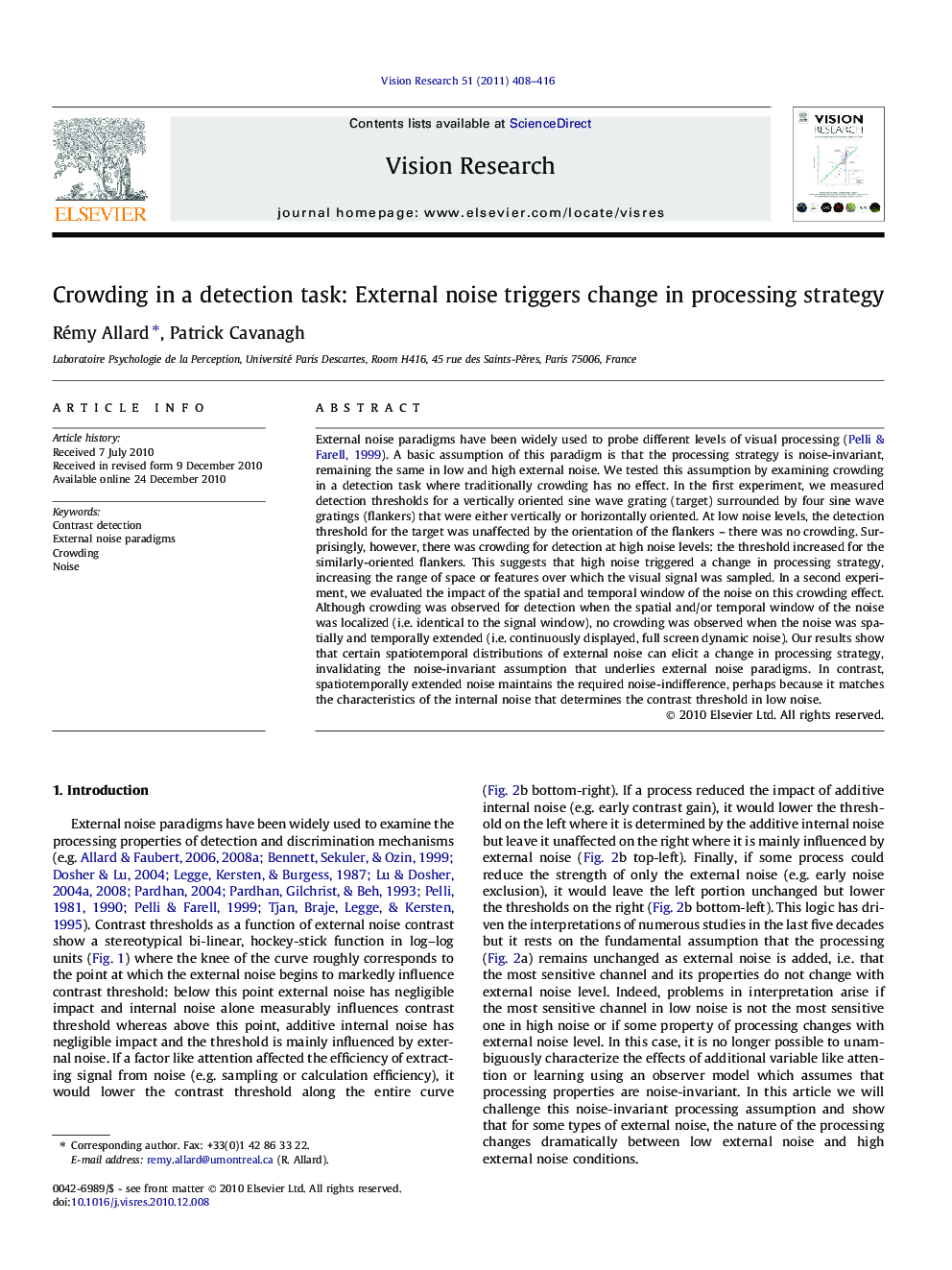| Article ID | Journal | Published Year | Pages | File Type |
|---|---|---|---|---|
| 4034237 | Vision Research | 2011 | 9 Pages |
External noise paradigms have been widely used to probe different levels of visual processing (Pelli & Farell, 1999). A basic assumption of this paradigm is that the processing strategy is noise-invariant, remaining the same in low and high external noise. We tested this assumption by examining crowding in a detection task where traditionally crowding has no effect. In the first experiment, we measured detection thresholds for a vertically oriented sine wave grating (target) surrounded by four sine wave gratings (flankers) that were either vertically or horizontally oriented. At low noise levels, the detection threshold for the target was unaffected by the orientation of the flankers – there was no crowding. Surprisingly, however, there was crowding for detection at high noise levels: the threshold increased for the similarly-oriented flankers. This suggests that high noise triggered a change in processing strategy, increasing the range of space or features over which the visual signal was sampled. In a second experiment, we evaluated the impact of the spatial and temporal window of the noise on this crowding effect. Although crowding was observed for detection when the spatial and/or temporal window of the noise was localized (i.e. identical to the signal window), no crowding was observed when the noise was spatially and temporally extended (i.e. continuously displayed, full screen dynamic noise). Our results show that certain spatiotemporal distributions of external noise can elicit a change in processing strategy, invalidating the noise-invariant assumption that underlies external noise paradigms. In contrast, spatiotemporally extended noise maintains the required noise-indifference, perhaps because it matches the characteristics of the internal noise that determines the contrast threshold in low noise.
Research highlights► Crowding affects detection in some forms of high external noise. ► Processing strategy changes with the spatiotemporal distribution of the noise. ► Violation of the noise-invariant processing assumption. ► Internal noise is spatially and temporally extended. ► To avoid strategy changes, properties of internal and external noise should match.
